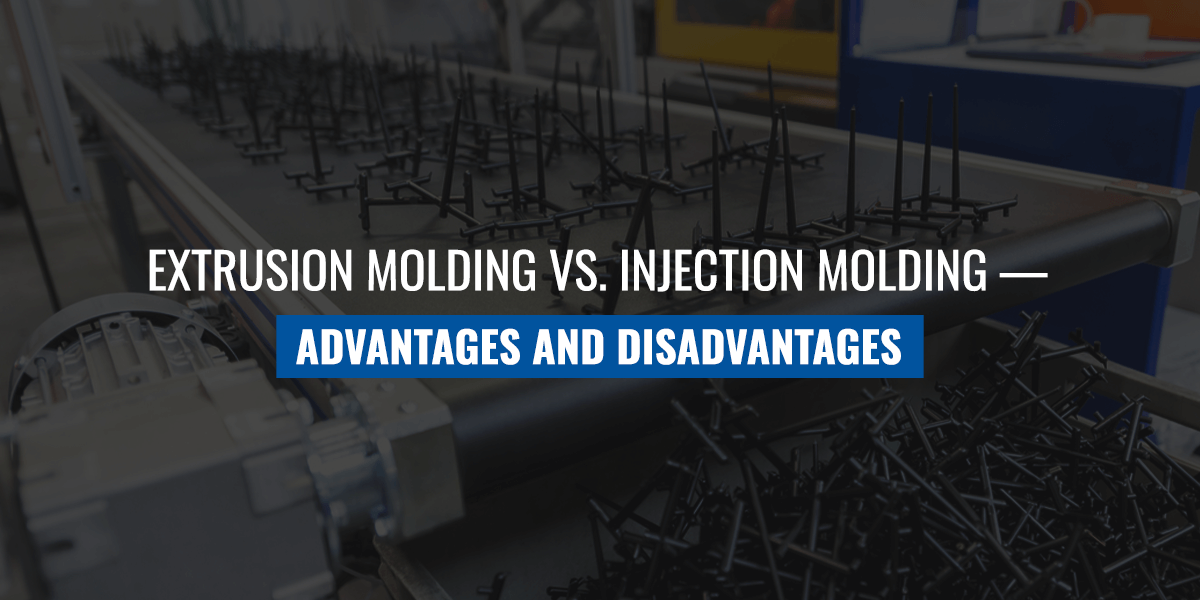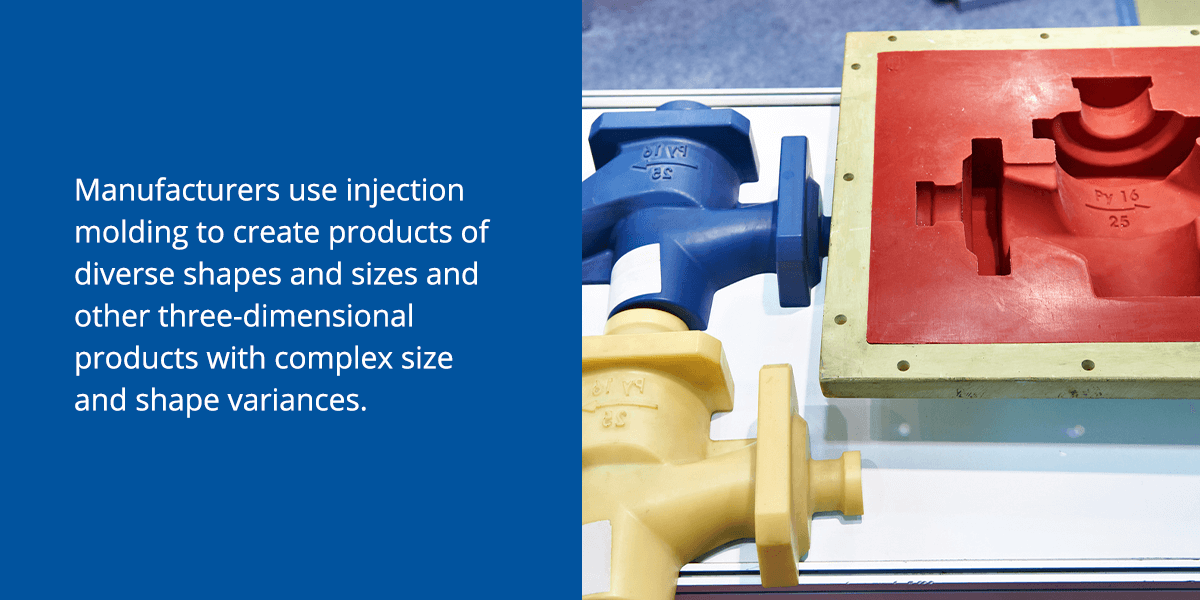When it comes to the design of custom plastic parts, you need to know the options available to your business. Many ways of producing plastic parts exist. If it is your job to manufacture those parts for your own products or your clients’ products, you need to know the method best suits your needs.
This brings you to injection molding vs. extrusion molding. Both methods are common for the production of plastic parts, but each has its own pros and cons. Each process is better for certain tasks compared to the other. Discover the difference between injection molding and extrusion molding so you can make the right choice for your business’s needs.
What Is Extrusion Molding?
The extrusion molding process involves forcing heated material through a shaped, cut piece of metal, or die. The continuous nature of extrusion molding results in a continuous form of chosen length. After the heated material is pushed through the die, it cools and sets, reaching its final state. This is a popular form of materials molding for items like plastic drinking straws, hoses, industrial piping, plastic rails and other long, cylindrical parts and products.
In other words, extrusion molding extrudes material through a die, often via forced pressure before the die. This act of forced compacting reshapes the initial material into the desired resulting shape and size. Here are the advantages and disadvantages of this molding process.
Extrusion Molding Advantages
The process and results of extrusion molding give it the following advantages:
- Low costs: Thanks to the high efficiency of the extrusion molding process, costs can be much lower than other molding methods. Extrusion molding often uses thermoplastics, which you can reheat several times while maintaining its quality. This means you can reuse leftover materials, saving you money on material and disposal fees.
- Consistent operation: Extrusion molding machines can operate 24 hours per day, barring any machine failures. This means you can produce your product continuously, reducing your chances of experiencing an inventory shortage.
- Flexibility: You have great flexibility in the types of products you can make via the extrusion molding process. As long as the material can maintain its continuous nature, you can create products of various shapes and sizes, including plastic sheets. You can also adjust the softness or hardness of the resulting material, leading to complex products with changes in how the surface feels depending on your needs.
- Post-extrusion alterations: Another benefit of plastic extrusion is how you can alter the final product. For instance, you can make 100 feet of hose at once, then cut it per order for the customer’s needs. And since the material stays hot after extrusion, you can also manipulate the material to customize its shape. It’s easy to alter what you make via the extrusion process, so you can have confidence in producing in bulk.
Extrusion Molding Disadvantages
Although extrusion molding has many advantages, you should also consider the two main disadvantages of this process:
- Variances in size: The hot material can expand after extrusion, which is a process known as die swell. Die swell occurs due to a combination of many variables, so it can be impossible to predict with 100% certainty how the final product will come out. Manufacturers must accept the fact that the extruded material may be imperfect.
- Product limitations: You can only make materials of specific, consistent shapes and sizes with extrusion molding. For instance, plastic soda bottles start wide and narrow toward the end to accommodate a cap. Standard extrusion molding cannot accomplish this type of product variation.
Call 810-207-6454 To Speak To An Expert
What Is Injection Molding?
Injection molding is similar to the production method of molten die casting. First, a heated liquid, like plastic, fills a mold. After a cooling process, the solid plastic leaves the mold in its finished shape.
Manufacturers use injection molding to create products of diverse shapes and sizes, including chess pieces, cups, plates, combs and other three-dimensional products with complex size and shape variances.
Injection Molding Advantages
The injection molding process has several advantages, including the following:
- Numerous design possibilities: Injection molding uses pressure to push the injected liquid into the mold. This allows the final product to take on many unique shapes and sizes. If your business needs to make complex plastic parts or products, then injection molding is the best method.
- Low scrap rates: Since injection molds can be so precise, the injection molding process yields little scrap. This means you can enjoy more accuracy in the amount of material you need and save money on material and disposal costs.
- Product consistency: When consistency in your final product is essential, injection molding is the way to go. You can know that the second part you produce will be the same as the first, and so on. There will be very little — if any — variation among the produced plastic parts.
- High product strength: Since injection molding is similar to a die-cast method, the final products are one piece of plastic, even when taking on complex shapes. This means you can avoid breaking points or having to attach pieces together. The mold yields one complete product with the potential for high strength and durability.
Injection Molding Disadvantages
It’s important to consider the pros and cons of every option you’re considering. Here are some disadvantages of injection molding you should be aware of:
- Expensive upfront costs: The design, testing and tooling requirements at the front end of the injection molding process give it a high upfront cost. Going through stages of designing and testing the prototype mold is essential to a successful finished product, but it takes more time and money than extrusion molding.
- Small runs of parts are uneconomical: The above disadvantage extends into the fact that small runs of parts will be extremely uneconomical to produce. Injection molding is an excellent option when there is a need for plastic parts in bulk. Because of the expense and time of the initial phases, it’s simply uneconomical to choose injection molding for small orders of plastic parts.
Contact AIC Plasti-Co® for Molding Machines and Components
When you need plastic molding machines or components for your existing machine, AIC Plasti-Co® is the one to call. We know how important the right plastic molding machine is for your business. So whether your company specializes in injection molding, extrusion molding or both, we’re ready to help you in the way you need.
Contact us online for more information. Our professionals would love to answer your questions and help you take the next step.



